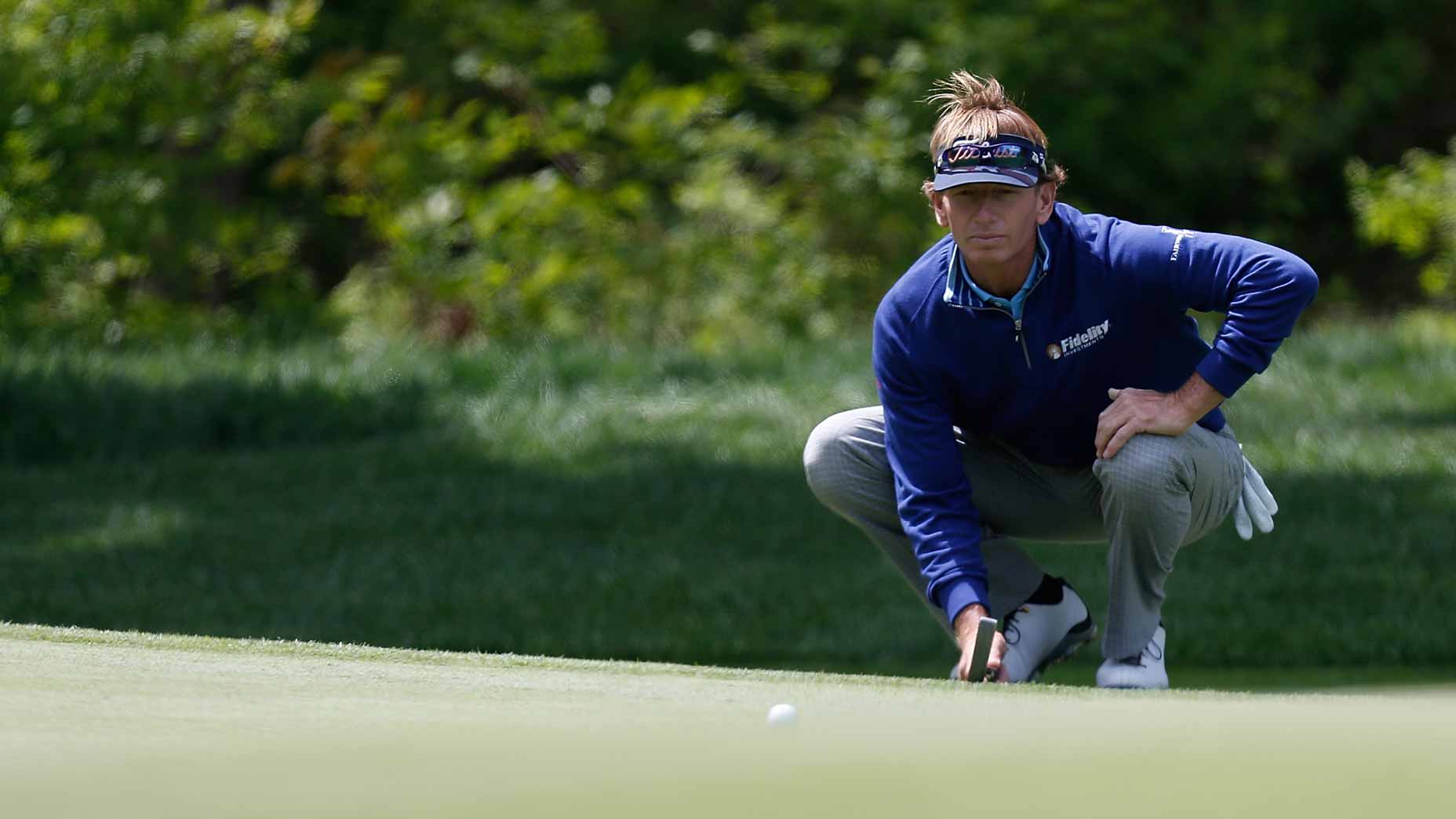To see success with putting, distance control is everything.
Sure, it helps to have the ability to read greens and to understand slopes, but when your speed is precise, you make a very difficult sport just a little bit easier for yourself.
But dialing in your distance control means shifting your mindset. Many amateurs think they should always try to make every single putt they stand over. Here’s the issue: That’s unrealistic.
Did you know that PGA players only make 18 percent of putts from 15-20 feet? But when they get one between 3-5 feet, they’re pretty much automatic, sinking it 88 percent of the time.
This is because they’re experts at distance control, understanding how to lag putt with their first shot, leaving it close, and then finishing it off from close.
So how can you become better at managing your distance control? Eight-time PGA Tour winner Brad Faxon — and putting coach to Rory McIlroy — shares a fun concept in the video below, which tests your putting IQ and improves your pace with the flat stick. Take a look and give it a go for yourself!
Improve your distance control with a Brad Faxon-approved putting test
To help his students become better putters, Faxon says he uses this IQ test to dial in their distance control and green-reading ability.
“I’ve got two 10-foot putts here,” he explains. “This one’s below the hole at 6 o’clock, and this one’s above the hole at 12 o’clock. So if I were to hit both putts at the same time [and try to make them] — an uphill 10-footer and a downhill 10-footer — which ball’s going to get to the hole first?”
Faxon then goes into the possible outcomes.
“There are three answers. The uphill putt gets there first, the downhill putt gets there first, or they get there at the same time.
“We all know that, to hit an uphill putt to the same distance as a downhill one, you have to hit the [former] harder — so it’s moving faster over the same length of time,” he adds. “So that uphill putt’s going to get to the hole faster than the downhill putt.”
Next, Faxon drops an interesting stat to consider regarding PGA Tour players, saying that pros make more putts from the same distance when they’re uphill than when they’re downhill.
So why’s this the case? A major reason is due to how much the ball breaks when it’s traveling slower versus rolling faster.
“Let’s just call this 6 o’clock, and if I come over to 8 o’clock, this putt’s going to be uphill and breaking left to right,” Faxon explains. “But if I move over to 4 o’clock, this putt’s going to be uphill and breaking right to left.
“Conversely, if I go to the top side [of the hole] and go to 10 o’clock and to 2 o’clock, those putts are going to have more break than the 4 to 8.”
This is where understanding your distance control comes into play, since downhill putts need to be hit softer with more of a break versus uphill putts. You also need to take into account other uncontrollable factors, according to Faxon.
“You have to play more break from 10 to 2 than the putts from 4 and 8 — which makes it more difficult,” Faxon says.
“It’s not because you’re just hitting it softer, but it lets the elements get more involved, too, like imperfections in the green, wind, the way gravity takes over [because of the break and because it’s moving slower]. So having an uphill putt gives you a better chance [of holing it] because you can hit it firmer than the downhill putt.”
Wellputt First Golf Putting Mat – 10ft
View Product
